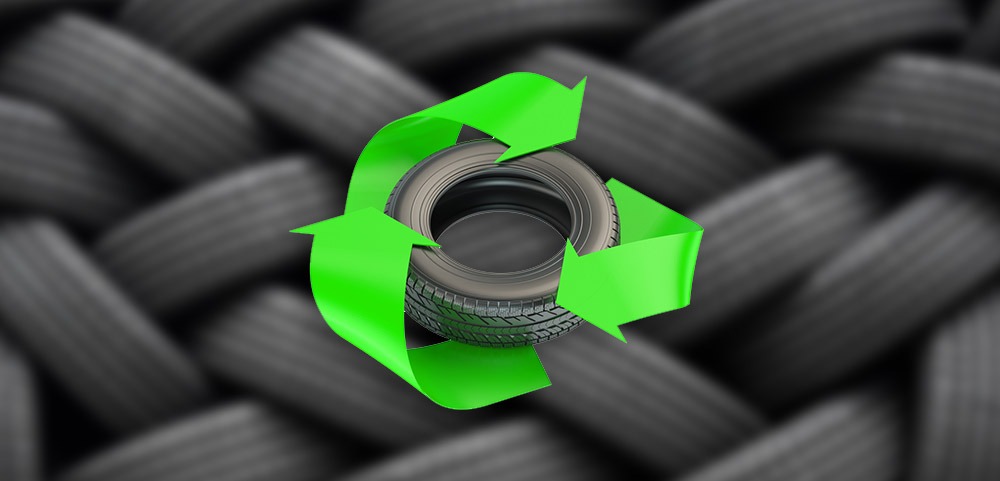Worn car tires are one of the most infamous wastes of society. Considering the improvement of the quality of tire production, we must accept that leaving worn tires in nature can irreparably damage the environment. Worn and damaged tires have caused one of the most significant environmental concerns today. And the origin of these concerns is so deep and extensive. Part of this is due to various toxic chemicals used in rubber production. In general, the toxic substances that result from the decomposition and burning of tires in incinerators or accidental fires can easily pollute the soil, water and air. The problem with uncontrolled disposal of car tires has been going on for years in different countries, including Spain, Italy and even America. And despite strict laws, it is still associated with many implementation problems. Perhaps the root of the problem is the lack of awareness about the environmental effects and ignorance of the possibility of recycling. In the following, we will discuss these cases briefly.
Effects of burying a potential pollutant
Global estimates indicate that each person will depreciate at least one tire a year. One of the main terminals for disposing of used car tires is burial centers. Since tires occupy a large volume, they can quickly accumulate land in burial centers. On the other hand, their presence can be a sure source for the growth and reproduction of all kinds of rodents and vermins. Insects carrying diseases such as encephalitis and fever can multiply in such environments. Whereas in managed burial centers, the possibility of these cases diminishes as in uncontrolled sites, they are not far from expected. On the other hand, car tires often have complex, heterogeneous and unconventional compounds. Their manufacturing formulas usually include a wide range of chemical compounds, which most stay confidential. In general, the complexity and diversity of tire production methods show the impossibility of conducting accurate environmental assessments. The presence of toxic oily compounds and some heavy metals such as lead is enough to realise the critical problem. But not enough for the proper management of this product. As a result, the best solution for managing this type of waste is to know the types of containing chemicals through a special sedimentation process.
Accidental fires
The accumulation of worn tires increases the possibility of another dangerous risk, fire. Increasing air temperature is only one of the factors that can spark such a disaster. While a waste tire burns, it emits a thick black smoke into the air that can last for hours. And a mixture of extra tiny and toxic particles will enter the atmosphere. Sterne, butadiene, and oils containing benzene and chlorine are some of the toxics that seriously contaminates the environment. Even the oils in plastic contain heavy metals such as lead, chromium, cadmium and mercury. Fire can even introduce toxic metals such as chromium, arsenic, zinc, barium, cobalt, copper, iron, aluminium, manganese and vanadium into the environment, depending on the amount used. The pollutants from burning tires not only create critical respiratory problems like asthma or heart diseases but also can contaminate pregnant women’s breast milk.
Recycling as the ultimate solution
The mentioned circumstances bring recycling and reusing tire wastes into our perspective. One of the reasons that experts emphasize these issues is that the chemical composition of this product does not change under these conditions. The ideas for reusing this product are so simple yet ingenious that they might inspire you to do it more. In the following, some ideas are mentioned: With a little bit of creativity, a worn tire can turn into a children’s swing. Or with some paint, we can transform a tire into a vase. By cutting the tire with the right tools, you can even make a trash can, a doormat, a bookcase, and a firewood holder out of it. If you can get a sturdy wicker cover, you can use rubber as an easy chair. Even if these ideas are not to your liking, you can still deliver used tires to recycling centers. It is interesting to know that many of the expensive shoes found in the market are made of the same rubber, which is worthless to some.
Asphalt, the useful application of rubber recycling
One of the major uses for waste tires is making asphalt. Research has shown that this type of asphalt has more advantages compared to ordinary ones. Of course, to make this kind of asphalt, we need a large number of worn tires. The United States of America is one of the leaders in the use of this type of asphalt in the world.
- Reducing the cost of making asphalt due to the use of wasted tires
- These types of asphalts are more durable and do not crack
- More safety
- and Less vibration
- Diminishing harmful environmental effects


